|
This coming Monday is National Cheese Lover’s Day, which is celebrated each year on January 20th. What better way to rejoice in the joys of cheese than to talk about this dairy-based delight and pay homage to some of the most beloved cheesemongers and merchants in our amazing Borough. However, before we do so, let’s embark on a cheesy journey of knowledge about this much-beloved food. According to the Oxford English Dictionary cheese is defined as “a substance used as food, consisting of the curd of milk (coagulated by rennet) separated from the whey and pressed into a solid mass.” I don’t know about you, but this does not sound very appetizing to me! And yet, this “substance” has made its way into nearly every civilization and culture around the globe! Cheese dates back to 8000 BCE Historical records vary, as to when cheese was first made, and from all accounts, it is clear that its beginnings predate recorded history with the earliest proposed dates for the origin of cheesemaking range from around 8000 BCE, when sheep were first domesticated. A Thriving Enterprise during the Roman Empire There is also no conclusive evidence indicating where cheesemaking originated, whether in Europe, Central Asia or the Middle East. However, what is clearly documented is that the practice of making cheese had become a pretty sophisticated enterprise by the time the Roman Empire came into being. 3000 Thousand year old cheese found in Egypt The earliest evidence of cheesemaking in the archaeological record dates back to 5500 BCE and is found in what is now Kujawy, Poland, where strainers coated with milk-fat molecules have been found, according to Nature News’ article "Art of cheese-making is 7,500 years old". There is even early archeological evidence of Egyptian cheese depicted in Egyptian tomb murals, dating to about 2000 BCE. Further, a 2018 paper published in Analytical Chemistry stated that the world's oldest cheese, dating to approximately 3200 years before present, was actually found in ancient Egyptian tombs! Is Cheese the by-product of preserving? Some speculate that cheesemaking may have even begun as a way of preserving by pressing and salting curdled milk leading researchers to the conclusion that the earliest cheeses were likely quite sour and salty, similar in texture to rustic cottage cheese or feta cheese. ********************************************************************* Did you know?? Americans consume over 31 pounds of cheese per year. But that's nothing compared to the French, who eat over 50 pounds of cheese per year. ********************************************************************* What’s in a name According to CultureCheeseMag.com, “Cheese, as well as the Spanish queso and German Kaese and a few other cheese words, all can be traced to the Latin word for cheese, caseus. Going back a little further, the earliest known proto-Indo-European root is *kwat-, a term that refers to the process of making cheese as it means “to ferment, to become sour.” Who knew! The Development of commercial cheese production Fast forward to 1815 and Switzerland is the site of the first factory for the industrial production of cheese. But, interestingly enough, it was in America where large-scale successful cheese production first began and it was none other than a New York dairy farmer in Rome who began making cheese in an assembly-line fashion in 1851 using the milk from neighboring farms. Modern cheese production worldwide According to the United Nations Food and Agriculture Organization, world production of cheese from whole cow milk was 18.7 million tons, with the United States accounting for 29% (5.4 million tons) of the world total, followed by Germany, France and Italy as major producers. Hundreds of cheese varieties And as any great cheese connoisseur knows, the variety of cheeses is incredibly extensive with a plethora of types from an array of milks and even nuts for the non-dairy cheese lovers. The International Dairy Federation recognizes around 500 different varieties, and up to 1000 identified by other sources. The range in textures and flavors is as diverse as the sources from which they are made. From cow to goat to sheep and buffalo milk to almonds and even cashews, and whether salty, tangy, creamy or gooey, the options are truly boundless! ********************************************************************* Did you know?? The world's largest cheese was put on display in 1964 at the New York World's Fair. It weighed over 34,000 pounds. ********************************************************************* The Bronx is home to some of the most incredible purveyors of fine cheeses, categorically recognized throughout the Borough and beyond as go-to resources for this dairy delectable. A number of these prized shops can be found within the confines of Little Italy and Arthur Avenue, while others are scattered throughout the Borough. Whether Italian, Hispanic, African American, Asian or any other ethnicities that comprise the fabric of The Bronx, good cheese is embraced and prized by all! It was no easy task to narrow down our favorites, but here are seven shops worthy of mention! We listed them alphabetically as not to rate them. 1) Ann Clairs Salumeria 1130 Morris Park Ave, Bronx, NY 10461 (718) 409-1171 www.annclairs.com Located in the Morris Park section is Ann Clairs Salumerua which has been serving the local Bronx community with its specialty Italian food since 1972. Offering extensive breakfast, lunch and dinner menu options, this family run eatery is particularly well known for the homemade mozzarella they make. It makes no difference if you are in the mood for a wrap or sandwich, a salad or one of their home-made pasta dishes, there are fresh cheese choices galore for any craving. 2) Calabria Pork Store 2338 Arthur Ave, Bronx, NY 10458 (718) 367-5145 www.calabriaporkstore.dinehere.us Growing up Italian, one very prominent memory is walking into the pork store literally embraced by a ceiling of hanging cured meats and cheeses. Calabria Pork Store embodies the best of this quintessential characteristic of old school Italian pork stores. One online reviewer referred to this mom and pop shop “Phenomenal, awesome, fantastic - no exaggeration, no embellishment, just amazingness” and another one “cheese heaven.” Suffice it to say, you will find one of the greatest selections of cheese from Parmigiana Regiano,, Calabrese table cheese, homemade mozzarella and bocconcini and burrata. 3) Calandra's Italian Cheese 2314 Arthur Ave, Bronx, NY 10458 (718) 365-7572 www.calandrascheese.com With a history that dates back to 1942, Calendra’s Cheese is a cheese lover’s dream. It’s huge selection of cow, sheep and goat cheese includes its homemade ricotta and mozzarella that will not disappoint. Just walking in overwhelms the senses with the waves of sharp and salty fragrances. Free samples are always offered to customers. 4) Casa Della Mozzarella 604 E 187th St, Bronx, NY 10458 718-364-3867 www.casadellamozzarelladeli.dinehere.us We are simply preaching to the cheese lovers’ choir in naming Casa Della Mozzarella one of THE best cheese shops in The Bronx. In fact, not only has this humble little shop been Zagat Rated As The Best Mozzarella In New York City For Over A Decade, but, one will find it nearly impossible to get a less than 4.5 rating on any review site including Trip Advisor, Thrillest, Menupix, Yelp or Four Square. Founded in 1993 by Orazio Carciotto, an Italian immigrant and his son, Carlo, this tiny shop located on 187th Street in Little Italy is an old-school Italian deli known for its legendary hand-pulled mozzarella. Not only is their renown “mootz” considered the best in the city and their paninis are to die for, about which fans continually rave all over social media, but the service and family atmosphere has customers willing to wait in long lines for their coveted delicacies! The texture of the cheese from this local cheese shop is the perfect quality as they do not make their mozzarella in bulk for the week, but rather make it fresh daily. 5) Joe's Italian Deli
685 East 187th Street, Bronx, NY 10458 (718) 367-7979 www.joesitaliandeli.com LIke so many Bronx businesses, Joe’s Italian Deli is family-run known for the quality of the products it offers. Moving with the times, Joe’s has embraced the evolving population of the neighborhood and caters to the varied food cultures of the community. When it comes to cheese, this Little Italy-based deli has built a reputation as a valuable resource for its home-made mozzarella and fine imported cheeses with both local customers and beyond. Since opening its doors more than three decades ago, they have over 40 different cheeses, mostly from Italy, that include Parmigiano Reggiano, Provolone, Fontinella, Fontina, Fiore di Sardegna, Gorgonzola,Piave and Prima Donna. And if you are reading this and are not located nearby, do not fear - Joe’s Italian Deli ships! 6) Mike's Deli The Original Arthur Avenue Deli 2344 Arthur Avenue, Bronx, NY 10458 718-295-5033 www.arthuravenue.com Whether you are taking out or dining in, Mike’s Deli, owned by the Greco family, has gained national recognition for its food and specifically, their cheese. With a history that dates back to the late 1800’s, not only do some reviews claim that Mike’s Deli is the best lunch spot in The Bronx for authentic Italian food, but celebrity chefs rave about this Belmont-based deli! From Giada DeLaurentis who insists “You need to try the fresh homemade mozzarella from Mike’s Deli. It is the best around,” to LIdia Bastianich who has said, “I always pay a visit and get a sandwich at Mike’s Deli. There is an endless array of cold cuts, marinated fish, olives, and even mozzarella,” Mike’s is on the national radar. Clearly, Mike’s is revered as a cheese destination by professional foodies and the deli’s reputation is equally beloved by the local community and beyond. 7) Tino's Deli 2410 Arthur Avenue, Bronx, NY 10458 (718) 733-0873 www.tinosdeli.com A fixture in Little Italy for over fifty years,Tino’s Deli recently relocated to a new location on Arthur Avenue in the bigger and renovated old Belmont Community Center. Among their many cheeses, one of the best is their bocconcini, which is available both salted and unsalted. According to Bronx Historical Tours owner, Alex Maruri “The bocconcini is delicious and so soft that it melts in your mouth.” Tino’s Deli is one of the stops on her Little Italy Tour for neighborhood students, where they offer the kids mozzarella making cheese classes. Till next time, -Elisa
0 Comments
The history of the Bronx and the people that contributed to its growth and expansion through the past few centuries is quite astounding, filled with remarkable facts. For instance, were you aware that Sir Winston Churchill, one of England’s most prominent leaders, has a pedigree that hails from New York City, with relevant events and remnants that are important elements of the history of the Bronx? Indeed, and a colorful one at that. England’s own son, Winston Churchill was the grandson of Leonard W. Jerome, an American financier. To any Bronxite, the name Jerome is a familiar one and quite common throughout the borough as a main Bronx thoroughfare, a reservoir, a park, a post office, apartment building complexes, and many other local businesses. So how did one of the most influential and beloved leaders of the United Kingdom come to be a descendant of one of America’s wealthiest financiers? To answer this question, it is necessary to take an historic journey into the life of the man that Churchill himself referred to as “fierce.” Born in 1817 in the town of Pompey in Onondaga County, New York, and raised on a farm, Leonard Walter Jerome was one of ten children, nine of which were boys, of Aurora Murray Jerome and Isaac Jerome. His father, Isaac, was a descendant of Timothy Jerome, a French Huguenot immigrant who arrived in the New York Colony in 1717. Ironically, Jerome would drop out of Princeton, because he was not very good in math, and go on to attend Union College, where he studied law with his uncle, known as Judge Jerome and set up a practice in Rochester, New York. He later moved to New York City, where he became a stock speculator and promoter, becoming known as the “King of Wall Street.” Both his career and personal life were filled with color, excitement and flamboyance. Achieving exorbitant financial success through his stock market investments, Jerome amassed and lost huge fortunes. He socialized in high society circles and did business with other well known moguls of his time, including Cornelius Vanderbilt and August Belmont, and held interests in several railroad companies, among other ventures. As a patron of the arts, Jerome was a participant in the founding of the Academy of Music, one of New York City’s earliest opera houses. His marriage to Clarissa Hall, the daughter of a wealthy Palmyra, New York family produced four daughters – Jeanette, Clarita, Leonie and Camille, who died at age eight. Rumor has it that his three daughters became known, in some quarters, as “the Good, the Witty and the Beautiful”. Leonard Jerome was known to indulge his wife and daughters to an enormous extent and this included them spending extended periods of time in Europe, where they socialized with the aristocratic elite of the day. .The financier was also quite an outdoorsman with a strong affinity for hunting and horse racing. According to records, he went on hunting trips throughout the American west, guided by Buffalo Bill Cody. However, it was his love of horse racing for which he is most well known.
Before it was known as the Bronx, and still annexed as part of Westchester County, back in 1866, Jerome purchased the estate and mansion of James Bathgate near Old Fordham Village and built Jerome Park Racetrack on the Bathgate land. In partnership with August Belmont, the racetrack held the first Belmont Stakes in 1867 and remained active until 1891. Jerome Racetrack was acquired and demolished by the city in 1894, to make way for Jerome Park Reservoir. The lovely Bathgate mansion was retained by the Jerome family and enjoyed as a summer home for a few years. In the early 1900s, the mansion was razed and replaced by the Kingsbridge Armory, which still stands. So, where does Winston Churchill fit into this picture? With Jerome’s wife and daughters spending much of their time in Europe, all three of his daughters would eventually marry British men. His daughter Jeanette, known as “Jennie” married Lord Randolph Churchill, the younger son of the Duke of Marlborough, and would thereafter become known as Lady Randolph Spencer-Churchill. Together they had two sons, Winston Leonard Spencer-Churchill and John Strange Spencer-Churchill. Winston, would of course become Prime Minister of England from 1940 to 1945 and again from 1951 to 1955. As a child Winston was not the best of students and often misbehaved. Receiving news that young Winston “seemed backward,” as a result of poor school reports, it was his maternal grandfather, Jerome, who is quoted as saying, “Let him be. Boys get good at what they find they shine in.” And nothing could have been more accurate as history has proven from Winston Churchill’s illustrious career as a statesman. It is evident that the grandfather of the British Prime Minister left his legacy on the Bronx through the numerous namesakes which still exist today with that legacy extending across the pond to the United Kingdom! - Till next time, Elisa As we start the new year, and not to mention, a new decade, the timing has never been better for local residents to focus on small community businesses and support local merchants and establishments. “Buy Local” is a phrase that has gained a great deal of attention and focus, particularly in the past decade as consumers are increasingly recognizing the positive economic impact of patronizing the merchants and businesses of their local community and neighborhood. The Bronx is no exception when it comes to the inarguable valuable effects that supporting the small businesses in the area has on the community as a whole. Support for “buying local” specifically in the Borough has become top of mind thanks to the combined efforts of a large mega corporation and a committed Bronx entrepreneur. According to Alexandra Maruri, founder of Bronx Historical Tours, “the future success of our beloved Bronx community is rooted deeply in the support our residents give in the form of their patronage to our local businesses. The more we reinvest locally with our dollars, the more we increase the opportunity for business expansion, which translates to more jobs and opportunities for Bronxites.” This belief has been an integral part of how Ms. Maruri runs her local tour company, which combines education and exposure to the historic and cultural gems of The Bronx with awareness, appreciation and promotion of local merchants and restaurants which are a fundamental part of each and every one of her tours and a sense of social responsibility. One event that has been enormously advantageous to the Buy Local initiative is the Amex Small Business Saturday®. This annual event, which just celebrated a decade of shining the light on shopping and supporting local community businesses across the country has created crucial and far-reaching awareness of the power consumers hold in helping their communities to thrive. With the motto, “Shop Small,” Small Business Saturday® takes place on the Saturday after Thanksgiving to encourage people to Shop Small and bring more holiday shopping to small businesses. Amex estimates that for every dollar spent at a small business in the U.S., approximately 67 cents stays in the local community according to an Amex-commissioned 2018 Small Business Economic Impact Study on businesses with under 100 employees. This year, during The 10th Annual Small Business Saturday, U.S. consumers spent an estimated $19.6 billion shopping at independent retailers and restaurants on Small Business Saturday®. Social media is another powerful tool that Ms. Maruri has and continues to utilize to drive home the value and necessity of supporting local Bronx businesses. “In 2013 I began using the key #supportthebronx to bring attention to supporting our small businesses and cultural institutions. I saw an opportunity by using social media to help The Bronx and promote the wonderful independent merchants throughout our neighborhoods who have and continue to be the backbone to The Bronx economy.” The world of the independent business owner is not an easy one. With rising rents, competition from large corporate retailers and new businesses opening, small businesses struggle with increased costs and rapid employee turnover. Additionally, U.S. Tariffs imposed on certain products has put an added burden on local community merchants. Maruri suggests “Whether it’s creating a hashtag or promoting an initiative, if you can do anything to support small local business, this is one sure way to preserve local moms and pops in The Bronx.” For established businesses, the pressure to stay up-to-date with the latest technology is more important than ever in order to compete with business newcomers and is imperative to survival so that they continue to thrive in the new tech savvy environment. Further, navigating the new modern world of social media is a learned process, making efforts like Ms. Maruri vital. “I work with a lot of small businesses in The Bronx and one of the things I have noticed is that many of them are not yet on social media, making it difficult to get found. The hashtag (#supportthebronx) and any type of word of mouth referrals is important for these mom and pops to flourish.” Keeping the money flowing back into the community enables a strong balance between long-time establishments and fresh and new businesses, bringing more opportunities for jobs and enabling the talent and upwardly mobile young people to stay and put down roots in the Borough. Maruri adds, “In the case of new businesses coming into the area from the outside, I always look for local hires, quality of products/good service and community inclusion to establish community support from the get go as well as a sense of respect.” And what do the local businesses have to say about the Support The Bronx-Buy Local initiative? “Supporting local is important because it builds community, it makes a big difference in the lives of small business owners, and it helps build strong neighborhoods with people who care about the social fabric of the area. Supporting local often means supporting someone you know, and that type of support goes much further than supporting a faceless corporation.” - Mike Hamlett, Jr. , The Bronx Brand “Charlie's Bar & Kitchen is by definition a local small business. We have no huge corporate sponsors or brands behind us, and we have grown and evolved based on the support of the South Bronx community. It has heavily informed our atmosphere and culture, and we always want to do what we can to give back. We work with neighboring businesses because we know that community-minded thinking protects and evolves the rich culture that has defined The Bronx.” - Jalilah Byrd, Charlie's Bar & Kitchen “More jobs will be created in your town, the community will prosper, and people will be more connected than ever to their own town.” - Ezekiel Sierra, The Lobster Box “I am a believer of the saying and concept, together we rise divided we fall. Supporting local promotes community awareness. It’s one of the more efficient ways that we can as a collective grow what we can each contribute to our own society. It is also a more sensible way to educate the up and coming generation of our already culturally rich community and why they should embrace it. Supporting local by attending community events has allowed us to meet very creative and genuine people who are also seeking authentic inspiration. As our name means Neighbors, we are big believers of tight knit community.” - Omar Canales, Seis Vecinos
“It’s important to support local businesses, especially when they provide good products and services with a special personal touch.” - Anthony Angrisani, Arthur Avenue Wine & Liquor Till next time, -Elisa
This year marks the 50th Anniversary of the Mott Haven section of The Bronx being named a Historic District and Alexander Avenue named a Historic Landmark. Although the borough has 12 historic districts today, Mott Haven was the very first bestowed with this distinction on July 29, 1969.
Like so many other critical Bronx local achievements and neighborhood accomplishments resulting from the hard work and commitment of Bronx residents, the founding and ongoing success of the Mott Haven Historic Districts Association (MHHDA) is yet another triumph by a proud Bronxite. Calling Mott Haven home for most of his life, Sam Brooks is the driving force for the development of the MHHDA, for which he is president. According to Sam, “I got involved in the neighborhood associations out of passion for my neighborhood and being up on the happenings with regentrification throughout neighborhoods in New York City.” As a proud Mott Haven homeowner for the past 18 years, Sam observed that many of his neighbors had tried to form an association throughout the past decade, but unfortunately, nothing actually materialized. That’s when Sam decided, six years ago, to transform his passion for his beloved neighborhood into the formation of a legitimate community association. His initial efforts included taking charge to structuralize an organization as well as outreach to his neighbors about his vision. Then four years ago, Sam took the pivotal step of formally registering the Mott Haven Historic Districts Association. In total, there are three historic districts within Mott Haven that now comprise the MHHDA. With a great deal of strategic thought, Sam purposely chose not to call the new organization a “homeowners association” as his intent was to make the MHHDA as inclusionary as possible regardless of homeownership or not. According to Sam, “my vision was to have all residents in the zip code feel they had something to offer to this historic community and at the same time provide a pathway for neighborhood involvement for the younger generation in the community for future preservation.” But, what exactly sparked Sam’s desire to be an active community leader? Like so many before him, Sam emigrated straight to The Bronx as a little boy. Arriving from Honduras on July 14, 1974, he would soon fall victim to the raging apartment building fires of the 1970’s and 1980’s throughout the Borough and would be forced to relocate temporarily to a shelter and then to Mott Haven, where he would become a life-long resident. Sam attended local elementary school and would go on to become part of the second graduating class of South Bronx High School. Sam graduated from Stony Brook University and has enjoyed a successful career in both education and finance. Needless to say, with a history of nearly 5 decades in Mott Haven, Sam has witnessed first-hand many changes throughout the years to the cultural fabric and demographics of the neighborhood. With a predominantly black population in the area upon his arrival in the early 1970’s, the neighborhood saw the addition of more blacks and Puerto Ricans from Harlem throughout the same decade. More population shifts occurred during the last twenty years, according to Sam, with the inflow of Domincans and Central Americans as well as Mexicans.
Perhaps the biggest changes in the neighborhood would begin to take hold roughly ten to fifteen years ago when developers, seeing great opportunities in Mott Haven, began to trickle into the area At around this same time, another shift was happening. “I began to see that the older generation, including many of my own neighbors who had been in the area for 50 years in homes that had been passed down from generation to generation, were either passing away or moving out,” says Sam.
As this was happening, the neighborhood began to reinvent itself with white professional Manhattanites buying the town houses, largely as a result of word of mouth. Folks who were coming from lower Manhattan would tell their former neighbors and friends about available properties and a trend began. “Thirteen years ago the price of a renovated townhouse was about $430,000. Today, the value has increased and on average, a town house that requires work will go for about $700,000. One of my neighbors just sold her place for $1million, so to me, with these shifts happening, it felt even more vital to have an association to establish a common thread between all the different folks living in the Mott Haven area,” notes Sam. Of course, through the years dating back to the 1970’s there had always been a variety of tenant associations in the area, made up in general by blacks and Puerto Ricans, however, there was never any real structure or a board of directors to these groups. That’s where Sam has and continues to make a difference, accomplishing considerable inroads for the historic districts of Mott Haven. Since registering the MHHDA, he has built valuable relationships with professionals in the area whose legal prowess will assist in Sam’s next goal of creating a non-profit. For Sam this insures having a firm structure in place for the newer generations to move up the ranks and continue the legacy. With the historic value of this area, it is of paramount importance to preserve both the history and the culture for generations to come. In 2017, Sam made a submission to the Historic District Council for Mott Haven to be considered and celebrated. Their reply was a resounding yes with The Mott Haven Historic Districts celebrated in The Bronx, bringing tremendous notoriety to the area. Most recently, on July 29, 2019 the MHHDA enjoyed the success of its massive endeavor to celebrate the 50th Anniversary of Mott Haven being named a Historic District. Engaging the Mott Haven branch of the New York City Public Library, a lovely exhibit was installed to commemorate the event, which is on display through April 2020. The festivities included numerous officials, comprised of members of the Landmarks Preservation Committee, a commendation from United States Congressman Jose Serrano, massive media coverage by local news, including News 12 and the support of local businesses who supplied food, wine and beer for the celebration. According to Sam, “We are thrilled that the Mott Haven branch of the NYC Library is featuring the Mott Haven Historic Districts exhibit. As a NYC Landmark itself, the library was built in 1905 and is the oldest library building in the Bronx and it is our sincere hope is that some aspect of the 50th Anniversary exhibit will remain on display permanently.” With the momentum going, Sam Brooks has no intention of stopping. In fact, moving forward, one of his foremost goals is to see more signage added to the area to indicate the Historic District. “Unfortunately, many of the old signs have been vandalized or destroyed so we are working with the Historic Districts Council, the advocate for all of New York City’s historic neighborhoods, and the New York Landmarks Preservation Commission to achieve this objective” says Sam. “Signage is critical so you know you are walking through history as you walk through Mott Haven.” What’s more, thanks to Sam and his commitment, a self guided tour map is now available to all visitors of Mott Haven. You can literally get off the subway and begin your tour of the 18 historic buildings within the historic district! Till next time, Elisa "The Bronx-La Villette" Project Exhibition at the Library Claude Lévi-Strauss in Paris 201910/31/2019 It is remarkable what can be created through the lens of a camera by a visionary photographer. Beginning on October 5, 2019 for three months, the Library Claude Lévi-Strauss in Paris is showcasing the photography exhibit “The Bronx-La Villette” by Parisian Italian artist Matteo Pellegrinuzzi. This exhibition is a portrait of two areas in different parts of the world that share a similar story. Marked by a difficult past, a negative public image, working-class origins and a multicultural population that included large numbers of immigrants, both The Bronx in New York City and La Villette in Paris are today experiencing a deep urban renewal with an enduring spirit found in its residents. “The Bronx - La Villette” project was conceived five years ago in cooperation with Alexandra Maruri, founder of Bronx Historical Tours in New York. The photographer and Bronx tour guide began a friendship through a chance meeting on social media. As an admirer and follower of Matteo's work on Instagram, Alexandra began chatting with the photographer and would soon become Matteo's tour guide throughout The Bronx during his 2015 visit to The Big Apple. Conversing throughout the tour, the two realized that there were numerous similarities between The New York City borough of The Bronx and the artist’s Paris neighborhood, La Villette. With a history filled with struggle, neglect, abandonment and disinvestment in the 1980’s, both neighborhoods had come through these hard times as a result of a strong sense of community on the part of their respective humble and proud residents. As they explored The Bronx together, Alexandra suggested that Matteo consider taking photos for a possible photography collection which paralleled their home neighborhoods in America and in France. Matteo agreed wholeheartedly with his esteemed tour guide, already snapping away and capturing Bronx locals and merchants in their native settings, just being their authentic selves. Upon returning to Paris, Matteo’s attention would return to work deadlines, taking him several months to focus on the photographs he had taken during his Bronx trip. Looking at the image collection with fresh eyes a few months later, Matteo was intrigued by what he had captured in his simple portraits of the people who call The Bronx home, partaking in their ordinary, everyday lives. He fancied the collection so much that he decided to embark on a similar endeavor, capturing the people of his own Paris neighborhood of La Villette in their natural surroundings and daily lives, in much the same way. While the two cities were thousands of miles apart, characterized by different cultures, Matteo saw them much the same and wanted to capture his vision in photography to share with others. And with this next step came the birth of The Bronx-La Villette project. According to Alexandra Maruri "One of the main goals of this endeavor was to capture the human side of these communities from two different parts of the world. Both of these neighborhoods faced adversity, challenges and evolution." Located east of Montmartre, in the 19th District of Paris, La Villette possessed some similarities to The South Bronx, more than three thousand miles away. Interestingly enough, both of these neighborhoods, were situated slightly outside the city proper. The Bronx is an outer borough of world renowned Manhattan, the center of New York City. Likewise, La Villette lies in the outer district of the epicenter of Paris. These two areas, though technically, part of their main city, have more "neighborhood" qualities of family, local businesses and hometown warmth, even though they are technically recognized as part of a bigger metropolis. But perhaps the greatest commonality is their respective dark and gray reputation to the world at large as "dangerous" and "unsafe" places. The Bronx has long endured the negative view from the outside as being a bad place, full of undesirables and peril to those who visit. According to Matteo, La Villette suffered in much the same way, being portrayed on the world stage and in the media, as an unsafe area of Paris. The globalized shadowy, somber and mirky reputations shared and promulgated in the news and by Hollywood has left a lasting impression in people's consciousness about these two neighborhoods, in particular The Bronx. However, Matteo's photography collection captures the humanity and down to earth aspects of the individuals that reside in The Bronx and La Villette. With his introduction to the South Bronx by Alexandra, Matteo immediately found the similarities to his Parisian neighborhood, La Villette and endeavored to exhibit, in his own words, “the differences and similarities of these two places through my art and give them the dignity that they deserve.” Born and raised in Italy, Matteo departed his homeland for the city of Paris a decade ago, where he currently resides and is proud to call home. His love of photography started at the tender age of four, taking his first photograph and soon thereafter, the proud owner of his very own camera at age six! Matteo established himself as a professional photographer, first working for news agencies and then moving along to the glamour of fashion photography for such renown publications as Vogue Italy and G.Q. Magazines, respectively. Speaking about his technique, Matteo says, "For many years my photographic narrative was an interest in people and their relationship with their location showing current realities that could one day be forgotten. The means I employ are the portrait and reportage, often made of silver medium or large format. This allows me to freeze a moment, an emotion, a place, which becomes almost unique.” During Matteo’s visit to New York in April 2018, I had an opportunity to speak with the artist in detail about his style and photography preferences. He shared with me that, in his opinion, and quite obviously to the trained eyes of a photographer, good, old fashioned film is the best method for optimum photographic aesthetic quality. This is precisely how he shot his photos for The Bronx-La Villette project, all of which are featured in black and white. With successful exhibitions in Paris and New York, “The Bronx-La Villette” project continues its journey over the next few months in Paris once again, with the exhibition of 90 photographs on display, divided into three parts with a rotation of 30 photos each month.
Singing the praises of Matteo’s photographic creation, Alexandra adds, “The topics for this project were carefully chosen to showcase the local community, the everyday people who live in The Bronx and La Villette, very dynamic working areas with strong community ties. This is an opportunity to bring transatlantic neighbors together!” "The Bronx-La Villette" Exhibition Project will return to the Bronx, New York in 2020! Till next time, -Elisa For your reference: The Bronx-La Villette Project Exhibition Dates: October 5 to December 31, 2019 Location: Library Claude Lévi-Strauss 41 Avenue de Flandre, 75019 Paris (Metro Stalingrad or Riquet) Considering the fact that The Bronx has been revitalized by the local community, organizations, activists and religious groups since the 1970’s, bringing it back from great destruction to the thriving borough that it is today, it should come as no surprise that sustainable tourism was first organized by a local Bronx business entrepreneur. Committed to working within the guidelines and goals of sustainable tourism set by the United Nations, within the community, Bronx HIstorical Tours’ founder, Alexandra Maruri was not only the first to recognize the immense value in all The Bronx has to offer both locals and visitors from around the globe in what it possesses in historical sites, neighborhoods and cultural significance with the establishment of her company in 2011, but she was ahead of her time in making sustainable tourism her number one priority. Like many other important things in our society today, “Sustainable Tourism” has become a buzz word for those looking to capitalize on the attention given to this topic. But, it’s up for debate as to how many businesses that offer tours throughout The Bronx really understand the basic tenets of approaching tourism in a way that puts the community first and equally important is whether or not their “commitment” is personally motivated because they are also residents of the community. Tourists coming to The Big Apple are realizing through increased press coverage and articles about The Bronx, like this one, that there is more to the New York City experience than the island of Manhattan. They do not realize that blazing the trail and establishing The Bronx as a place that is filled with an abundance to see and experience was no easy task considering the negative and harmful press coverage this borough received for close to five decades since the 1970’s. What visitors desire is a way to see as much of the city as possible, including the newly, positively reflected Bronx. Tour companies, namely those based in Manhattan, that offer bus service to tours in the quaint and historical Little Italy in the Belmont section, for example are gaining the attention of New York City tourists, capitalizing on the groundwork and success of Ms. Maruri and her foresightedness about Bronx tourism. However, the question remains, do these companies know the neighborhood from first-hand experience? Are they committed to the growth and flourishing of the local businesses and establishments? Do they instill a sense of respect for the local culture and lifestyle of the residents and additionally, (but certainly not least) do they understand how to navigate mass tourism in an area that is not accustomed to it? When it comes to Sustainable Tourism, the overriding factors are always steeped in Preservation and Economy, because without an understanding on how to preserve the community and stimulate the economy, tourism is only benefiting the tour companies. Take for example the sudden and mass interest in the South Bronx with the release of the motion picture, The Joker. With many fans from all over wanting to visit the area that is featured in this movie, there has developed some controversy about how such mass visitations affect the community, which flows into the issue of sustainable tourism and the guidelines to its achievement. Long before this recent interest in the South Bronx, Maruri was offering tours throughout this area, three of which are currently ongoing, An Insider's Guide to the South Bronx, Introduction to The Bronx 101, and South Bronx Historic Tour. Most importantly, two of her key business practices include first and foremost, setting standards for a responsible visitor and encouraging support for small businesses in the area. And that is not all. Integral to her business are eleven principles of sustainable tourism set forth by the U.N., all of which she has built her business upon, with a growing commitment everyday, especially with the arrival of outside tour companies and experts who claim to understand the best way to bring sustainable tourism to The Bronx. According to Ms. Maruri, “Since starting Bronx Historical Tours eight years ago, there was never a question about implementing the principles of sustainable tourism and I was the first to adhere to the requirements and goals set by the United Nations. I see myself as a champion for the local businesses and the community, and my goal is to help the economy of The Bronx flourish, all while highlighting the historical significance of the neighborhood.” She goes on, “It’s all about respect for the community and preserving the culture, namely, the South Bronx, which has come under full view with the release of The Joker. So we always remain conscious of the effects of mass tourism, keeping the footprint minimized throughout our borough and in the process strive to change the perception of The Bronx.” This approach is clearly working because Maruri has garnered the attention of many respected people in the community, including Samuel Brooks, President of the Mott Haven Historical Districts Association (MHHDA), with whom she has developed a working partnership for the past five years. “We partner with MHHDA to enhance the way people look at The Bronx - we are a community, not a movie set, but a historical and cultural place filled with very humble people.” Mr. Brooks has also seen the Borough transform from the ruination of decades past to present day when there is a renewed interest in the history of the communities of The Bronx. He sees Ms. Maruri as the trailblazer for Bronx tourism. “Alexandra developed the model for sustainable tourism in our borough. From Little Italy to the South Bronx to Mott Haven and City Island, she knows everyone, and ties her tours into the local business community in an effort to build and expand their businesses.” Maruri herself recounts how prior to beginning her tour business, she literally went door to door throughout the various Bronx neighborhoods, where she had grown up in and frequented since her arrival to the United States in the early 1970’s as a little girl and discussed her entrepreneurial vision for developing the first-ever Bronx tours. Wanting to create a mutually beneficial enterprise, she shared her goal of building awareness and appreciation of The Bronx’s unique history and culture while simultaneously bringing awareness and patronage to local businesses. “It was important to me that I had their support, after all, these communities are my home and the local merchants were like family,” says Maruri, “and I expect nothing less than great respect from all of my tourists as they take the time to tour with me and learn about our rich history.” Mr. Brooks recounted how Maruri single-handedly forged ahead with her vision, when many in The Bronx thought she was crazy to take on such a formidable endeavor on her own. “She is authentic about her concern and love for the communities of The Bronx and sharing that love with her clients. Many of her tours are one-on-one and her public tours never exceed ten people, out of respect for the area.” Interestingly, almost all clients ask two similar questions when touring with Maruri - Are you from The Bronx and How long have you lived here, which is a clear indication that visitors are quite sophisticated and want the real deal when exploring the Borough. According to Maruri, “My clientele want to hear not only the facts about The Bronx and the places we visit, but also the personal stories of someone who has and continues to live The Bronx experience and is passionate about sharing it.” Taking her childhood experiences in the places she built memories and sharing it to benefit the community with visitors from all around the globe is what sustainable tourism is all about! Till next time, -Elisa Last weekend, Bronx Community College held their Diversity in Public Art event which celebrated artistic contributions made by and reflecting a multitude of cultural backgrounds, and above all to honor the historic first Hall of Fame in the United States. Opened to the public, this event began on September 21st and will run through October 25th displaying a mix of exhibitions that include paintings, sculptures, films, digital art and various mixed media, with the focal point being to reexamine the Hall of Fame and focus on the importance of cultural diversity in public monuments. Kicking off the commencement last Saturday in the Gould Memorial Library were some opening remarks by Luis Montenegro, BCC Interim Provost and Vice President for Academic Affairs. A musical performance followed by the Hondurian Bodoma Garifuna Culture band to get the “party” started featuring inspiring rhythmic drum compositions and harmonized singing, which included colorfully dressed traditional dancers performing in time with the music. Film screenings, poetry readings and performances filled the day culminating with an award ceremony and closing remarks. For many in attendance, (and I count myself among this group) the tour of the Hall of Fame of Great Americans was the prominent highlight of the day. Considering the fact that the weather could not have been more cooperative and one of the most beautiful Fall days ever, our group tour was conducted by the esteemed Bronx Historian, Lloyd Ultan. Both a Bronx native and a graduate of Hunter College and Columbia University respectively, Mr. Ultan has been the borough’s historian since 1996, having an illustrious career as a professor of history at Fairleigh Dickinson University’s Petrocelli College of Continuing Studies and a member of the adjunct faculty at Lehman College. Needless to say, the tour was very illuminating! Sharing both historical facts and pertinent pop culture information about the Hall of Fame itself and the individuals honored, Mr. Ultan’s charm and knowledge were matched only by his ability to sprinkle humor throughout the tour, making it captivating and entertaining. The outdoor sculpture gallery that comprises The Hall of Fame for Great Americans is of course located on the grounds of Bronx Community College, but what many may not realize is that it is the first ever such hall of fame in the country. Conceived by Dr. Henry Mitchell MacCracken, Chancellor of New York University, the Hall of Fame was intended as a way to honor Americans who made a significant contribution to our society. According to The American Monthly Review of Reviews published in 1900, Chancellor MacCracken acknowledged that his inspiration was derived from the Ruhmeshalle (Hall of Fame) in Munich, Germany. And while fame has come to mean more of “celebrity” these days, over a century ago, the meaning was more akin to that of “renown” which is ever apparent from the 96 (formerly 98) portrait busts that line the 630 foot open-air Colonnade of the Hall of Fame. Originally built on the grounds of what was New York University’s University Heights campus, the school was forced to sell the campus to the City University of New York in 1973 when it then became Bronx Community College. What a lovely inheritance for BCC – an architectural masterpiece which had previously been designated a New York City Landmark on February 15, 1966 and would be added to the National Register of Historical Placed on September 7, 1979. Mr. Ultan delighted our mesmerized group with fundamental facts about those individuals honored and a few tidbits of trivia which included how the Munchkins of Munchkinland mentioned the Hall of Fame in the 1939 feature film, The Wizard of Oz when they were honoring Dorothy. The Beaux Arts structure was designed by the architect Stanford White (who, incidentally also designed the BCC Gould Memorial Library), was named for its donor Helen Gould and dedicated on May 30, 1901. If you are curious like me, you may be wondering how it came to be decided who would be featured in the Hall of Fame. Well, as Mr. Ultan explained, there was a procedure and a number of requirements to the process. Each state was allowed to nominate notable persons for consideration, regardless of gender or race, however, individuals were required to be native born or naturalized (since 1914) citizens of the United States. To avoid the prospect of self promotion, it was required that nominees be dead for 10 years from 1900 to 1920 and then it was increased to 25 years deceased in 1922. Lastly, a nominee must have made a major contribution to the economic, political, or cultural life of the nation. I decided to embark on a little research myself about the election process and came upon a wonderful article written by Richard Rubin of The Atlantic Monthly, written in 1997, entitled “The Mall of Fame” which explains the election process beautifully:
“MacCracken wanted to make sure that the people enshrined in his Hall of Fame were truly famous, not just memorable. So he established a board of electors, composed of men and women who were themselves possessed of some measure of renown, ostensibly people of great character and sound judgment. Over the years that body would include the most respected writers, historians, and educators of their day, along with scores of congressmen, a dozen Supreme Court justices, and six Presidents…It was a truly democratic institution — anyone could nominate a candidate, admission would be free, and although NYU served as a steward, raising funds and running the elections, the whole thing was technically the property of the American people.” The Colonnade is well-designed and broken into categorized marked sections, that comprise fifteen classes and our delightful tour guide highlighted several individuals from each one, providing insight into their accomplishments and contributions. These classes include authors and editors, businessmen, inventors, missionaries and explorers, philanthropists and reformers, clergymen and theologians, scientists, engineers and architects, lawyers and judges, musicians, painters, and sculptors, physicians and surgeons, politicians and statesmen, soldiers and sailors, teachers and distinguished men and women outside of these classes. Equally relevant are the sculptures who created the busts, who were as diversified in their backgrounds and native countries as the elected individuals whose likenesses fill the hall. Upon entering from the grounds of the campus, the first category featured are inventors and scientists, which was a great way to kick off the tour! Here is a short list of those individuals featured on our tour. See how many you know!
In the case of Robert E. Lee, he is disliked today because he was a commander of the Confederate States Army, however, he was a top graduate of the United States Military Academy and an exceptional officer and military engineer in the United States Army for 32 years. He also distinguished himself during the Mexican–American War, and served as Superintendent of the United States Military Academy. As for Stonewall Jackson, he was also a Confederate general during the American Civil War and his military strategies are still studied today. With my college years as a student at Fordham University decades behind me, I’m once again focusing in on institutions of higher learning with two teenage daughters who are becoming increasingly aware of the many options they will have to consider during the next few years. In many ways, I took for granted just how amazing a school Fordham was when attending. However, now that I am beginning the college investigative process with my teenage kids with objectivity, it is no wonder Fordham is a much desired college to attend by kids around the country and the world! Here are ten lesser known facts that you might not be aware of about this prestigious Bronx university. 1. Fordham ranks in Top 100 college and universities in 2019 In a ranking of all national universities, Fordham, private and co-ed, ranked #70. The university has some of the highest-ranked graduate programs in New York and the Northeast, from business and law to education and social work. The Gabelli School of Business, in particular, is recognized as one of the top business schools in the nation. 2. Top Ranking for Best Undergraduate Teaching Based on a survey conducted in the spring of 2018, Fordham was ranked among the most prestigious universities for putting a particular emphasis on undergraduate teaching. The ranking were tallied from the most votes given by top college administrators and Fordham came in at #52 along with Massachusetts Institute of Technology and Pennsylvania State University. 3. Fordham University is the Oldest Catholic College in the Northeast Fordham University was founded by the Catholic Diocese of New York in 1841 as St. John’s College, making it the oldest Roman Catholic institution of higher education in the northeastern United States. The vision began in 1840 when The Most Reverend John J. Hughes purchased the bulk of Rose Hill Manor, a private farm in the village of Fordham, now part of The Bronx. The administrators brought in Jesuit educators to run the college in 1845, establishing Fordham as New York City’s only Jesuit institution. The school is also the third-oldest university in the state of New York, after New York University and Columbia University. 4. Tuition at Fordham University is Slightly Higher Than Average The undergraduate tuition and fees at Fordham University are slightly higher than the average amount of similar schools’ tuition. The 2019 undergraduate tuition & fees of Fordham University are $52,687 for their students and approximately an additional $17,969 for room and board. Graduate school tuition & fees for 2019 are $34,363. On average, annual tuition for private 4-Year not-for-profit colleges and universities total about $50,900 for annual tuition and fees. Incidentally, this is a far cry from what it cost when I was an undergraduate student back in the day at $10,000 with room and board! 5. Students Enjoy the Experience of Urban Living and Inter-Campus Travel The school motto says it best with “New York is my campus. Fordham is my school.” In the heart of The Bronx, the Rose Hill Campus offers both its outdoor gardenesque grounds and the ultimate urban setting outside its gates. With its second residential campus at Lincoln Center, in the cultural heart of Manhattan near Central Park, transportation between the two is easy and accessible via the school’s Ram Van shuttle that runs every half hour. The college’s third campus in Westchester’s Harrison can also be reached by means of the Ram Van. 6. Campus Life versus City Apartment Living Fordham University offers resident students the chance to select their preference for living quarters all four years. Even Freshmen do not have to live on campus, if they choose, taking advantage of the Bronx apartment life. However, any student who is promised housing upon admittance to the school is guaranteed a room for four consecutive years. 7. Fashion Law Anyone? Fordham School of Law, is home to the first Fashion Law Institute in the country. With the help of the Council of Fashion Designers of America, it’s the world’s first center dedicated to the law and business of fashion teaching the four pillars of this specialty which include Intellectual property, Business and finance, International trade and government regulation, including sustainability, privacy, and issues related to wearable technology and Consumer culture and civil rights. 8. The Opportunity to Live on a Biological Field Station Ever imagine what it would be like to reside in a log cabin and study your natural surroundings? Each year, this becomes a reality for twelve lucky graduate students who are able to live in log cabins allowing them to be closer to their research. Graduates and undergraduates alike may take advantage of the Louis Calder Center, a biological field station where environmental studies courses and research are conducted. 9. It’s Not Greek to Me Although co-ed with many activities, clubs and academic studies, this Jesuit university does not offer a Greek life (fraternities or sororities). 10. Students Love Fordham It’s a good sign that students love their school when retention and graduation rates are high. At Fordham University, the rate of student retention is very high at 91%, which is well above New York average. The graduation rate at Fordham University is very good too at 81%. 11. A Fordham Education is Mark of Distinction According to recent government data, 42,811 applications were submitted to Fordham University by students wanting to attend and 20,366 were accepted, so it is pretty difficult to be accepted at this school. On the flip side, if you or your loved ones are lucky enough to be accepted and earn a degree from this prestigious Bronx college, then you should be very proud. Till next time, -Elisa This year marks the thirty-ninth year of World Tourism Day with the theme “Tourism and Jobs, A Better Future for All.”
Beginning in 1980, the United Nations World Tourism Organization began the annual celebration of World Tourism Day on September 27 with the purpose of raising awareness on the role of tourism within the international community and to demonstrate how it affects social, cultural, political and economic values worldwide. Each year, a new theme is chosen and as per the UNWTO General Assembly decision at its Twelfth Session in Istanbul, Turkey in 1997, a host country is designated each year to act as the Organization’s partner, and this year, excitement abounds in India, this year’s World Tourism Day host! Getting down to brass tacks, what does this year’s theme really mean in practical terms. Well, it would appear that there are three basic components to successfully launch initiatives moving forward. These include Education, Skills and Jobs, regardless of geographic area. From a global standpoint, international travel has never been bigger and it continues to grow. In essence, the world has gotten smaller because of technology, social media and overall growth socio-economically during the last half century. The United Nations World Tourism Organization (UNWTO) estimates that internationally there were just 25 million tourist arrivals in 1950. Just 68 years later, in 2018, this number has increased to 1.4 billion international arrivals per year. This is a 56-fold increase.* People have become more interested in the far-reaching corners of the globe - which is relative depending on where they live - and with the growth in the international tourism industry, travel has never been more accessible. However, with this increase in demand comes the need for better educated tourism professionals, with honed skills that include not only knowledge of the places to which they are either assisting people to visit, but also an appreciation and respect for the communities within which they are creating tours and travel opportunities. The skills required for travel professionals are increasingly under the global microscope with the need to be more sophisticated as a result of the plethora of online rating sites that can make or break a business’ reputation. The Bronx, New York, is an example of a New York City destination which is becoming increasingly recognized as an important tourist focal point. Through growing internet exposure and word of mouth, curiosity is on the rise for this outer borough which is home to national historical sites and unique cultural neighborhoods and nuances and joins the ranks of many other formerly less visited places around the world. As a result, the necessity for qualified local tour guides with a keen knowledge of the area, relationships with local business owners and a commitment to sustainable tourism has never been more critical. Whether it is The Bronx or any international locality, a vital aspect of being a well educated and skilled tourism professional is the incorporation of sustainable business practices which show a greater respect for the local residents, the community at large and the native culture and social components that make up the area. The result is that it impresses a sense of consideration and local awareness on their visiting clientele. These sustainable businesses practices include using public transportation and walking through neighborhoods and villages, keeping tour group sizes small and manageable, supporting small businesses and local vendors (which brings economic growth to individual neighborhoods) an insistence on respect and polite interaction with community inhabitants and a commitment to preserving the culture and strong sense of history for the tourist area. New York City is taking action by creating a pathway to promote sustainable practices. The Big Apple aims to make the city carbon-neutral by 2050 and buildings more energy efficient. When it comes to jobs, consider the fact that travel and tourism provide employment to nearly 300 million people in the world either directly or indirectly. This number equates to 1 out of 10 jobs in the world being provided by the Tourism sector. In fact, when it comes to small nations like Bhutan, Maldives and Cambodia, to name a few, 40% of the people earn their livelihoods from the travel and tourism Sector. What’s more, this sector of the jobs market affords equal opportunities for both men and women with relatively accessible skills unlike other professions that may require advanced degrees and technological knowledge. Tourism jobs are quite diverse as well, considering the comprehensive nature of the travel industry. Building a career can range from becoming a travel agent and planner, to hotel industry professional, tour operators, event planner, tour guide and even fringe craftspeople such as chefs, public relations executives writers and online critics and webinar teachers. It would seem obvious that this could become a growing field of study for institutions of higher learning around the globe and a career choice worth considering. Till next time, -Elisa * www.ourworldindata.org By Diego Robayo The Bronx Academy of Arts and Dance (BAAD) was founded in 1998 and started out as an association to promote artists that belonged to minority groups whose rights at that time were still unrecognized by many in society by dancer Arthur Aviles and writer Charles Rice-Gonzalez, two LGBT rights advocates, and artists that leverage art to prompt societal development. Although their professions are different, they both use art to promote inclusion of groups that have traditionally been excluded from society. In 2013, BAAD left the South Bronx and settled down in the Westchester Square neighborhood of the East Bronx in a historic landmark building that was built between 1882 and 1883. Queer artists and artists of color have been able to express their ideas and feelings in the welcoming atmosphere of BAAD. This was an extraordinary social advancement at the time the organization was founded, considering that in 1998 the foundations of gay rights were still fragile. However, several events that occurred that year strengthened them. For instance, the first open lesbian, Tammy Baldwin, was elected to federal office in 1998. Aviles is a world-known performer who has been awarded with the highest distinctions in dance. In 1996, he established his own dance company in Paris, called Arthur Aviles Typical theatre, and one year later, he moved it to the South Bronx, the place where he was raised. He then teamed up with Charles Rice-Gonzalez to create BAAD. Rice-Gonzalez’s writings highlights the humanity of the South Bronx, which has been largely overshadowed by the neighborhood’s “messed-up reputation.” His debut novel, El Chulito (2011), was deemed as the first queer Puerto Rican novel set in the U.S. Although they both focus on different forms of art, they posses the common passion of advocating for gay rights, and this inclusion has been the core foundation of BAAD, which today presents empowering work of women, people of color and LGBT community. The Bronx has been an incubator for many cultural movements, setting models to follow for new artists. For instance, in the 1970s, the borough was credited for conceiving what ultimately became known as Hip Hop. This cultural efflorescence in The Bronx allowed BAAD to advance its cultural initiatives, despite how irreverent they were considered by some people. Despite being a borough that has been a cradle of progressive cultural movements it is also home of religious communities that may perceive BAAD’s presence with scorn. Compared to other ethnic groups, Latinos have one of the highest rates of affiliation to Christianity, and their connection to Christianity tends to come with derision towards ideas or movements that challenge their values. One of BAAD’s most recent arts initiatives is called Trasnvisionaries and it features cabaret dancers, poets, musicians, dancers and performers who identify themselves as Transgender. It is a courageous process that has brought about expressions of ostracism from community members that disapprove BAAD’s progressive and liberal thinking. However, the overall acceptance from the public has been favorable, even among traditional and conservative groups. When BAAD moved to its current location in 2013, it organized a welcoming event, inviting community representatives that included a sister from the Episcopal Church which owns the building where they are located. The event included a performance of half naked men with hefty bodies kissing each other and by the end of the show the sister thanked BAAD for the evening after having enjoyed the show. BAAD’s relation with the Episcopal Church illustrates how art unites people of contrasting ideas, in a way that other forms of expression cannot. Arthur Aviles is a widely acclaimed dancer whose performances transmit such beauty that other aspects of him, which are more controversial, are faded into the background of puritan minds. In 2003 The New York Times wrote: “If you don’t know Mr. Aviles, you haven’t seen one of the great modern dancers of the last 15 years.” https://dr2882.myportfolio.com/baad |
Elisa ValentinoElisa is a travel blogger and freelance writer. She is co-founder of TravelinCousins.com travel blog and writes a weekly column for ThisIsTheBronx.info. Archives
January 2020
Categories |



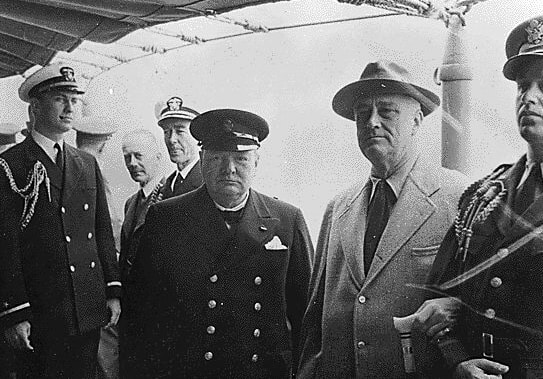
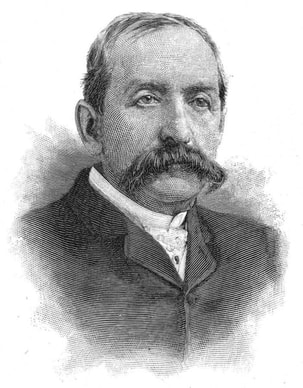
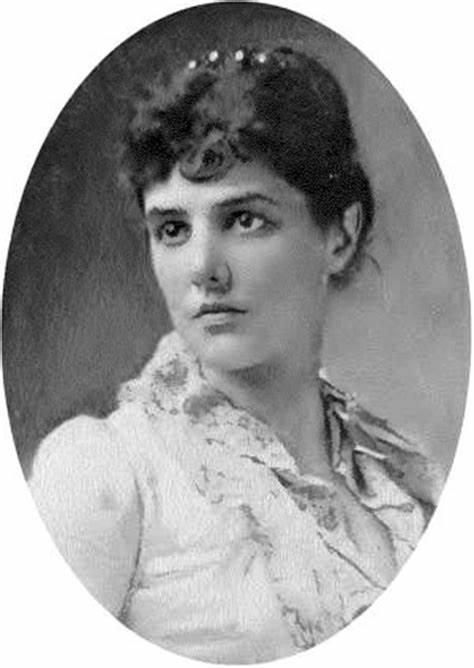
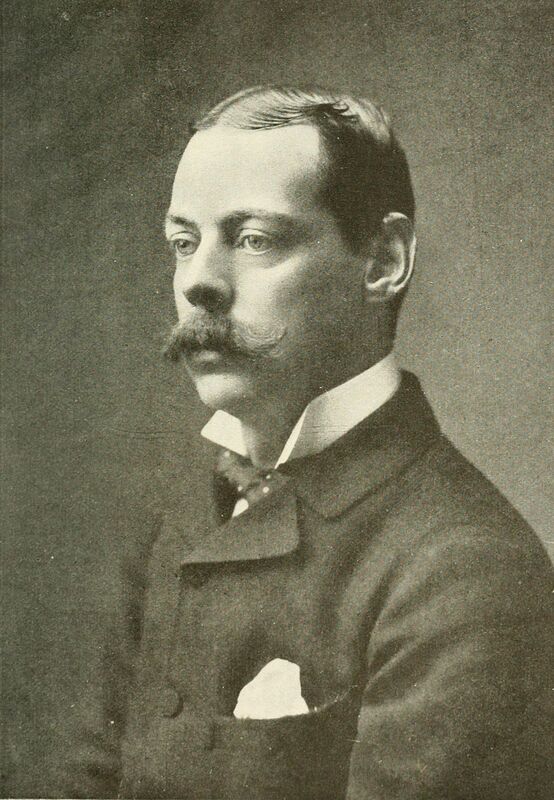








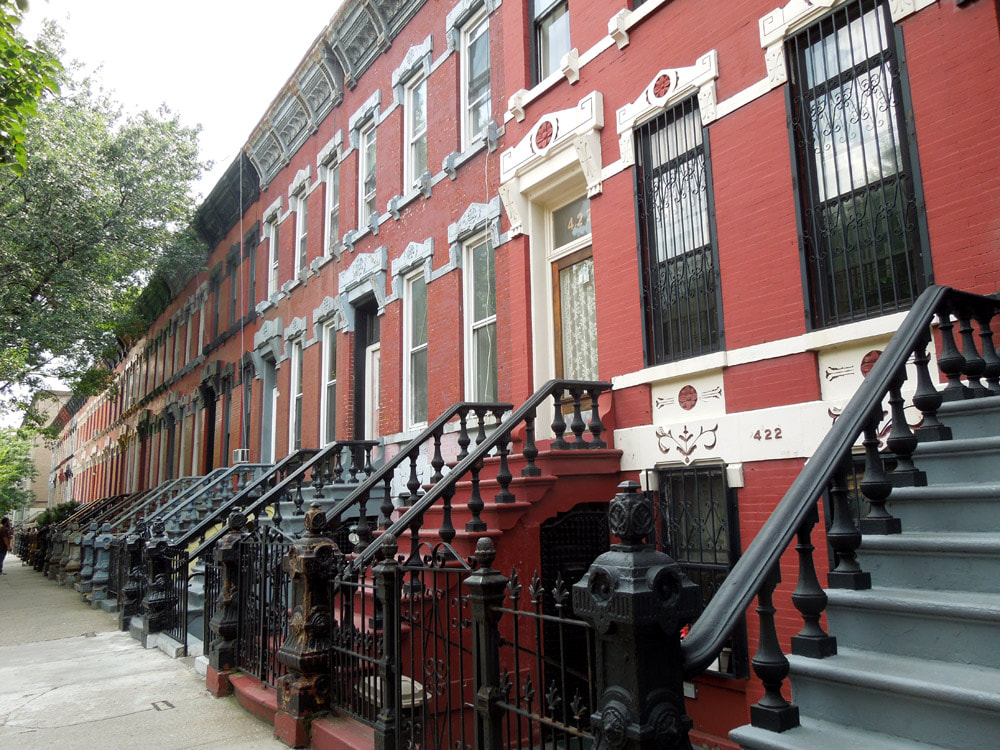
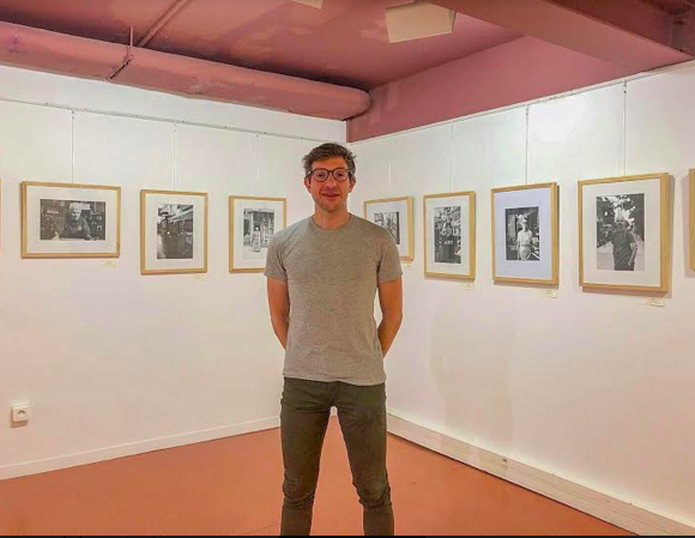
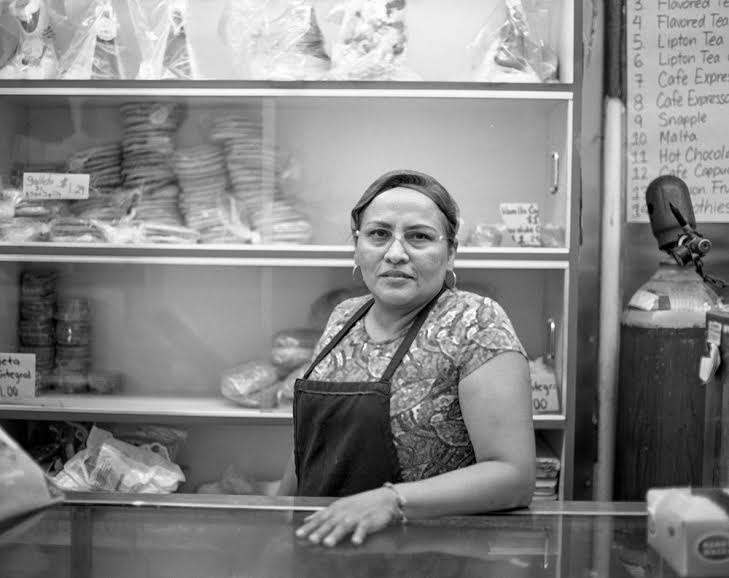

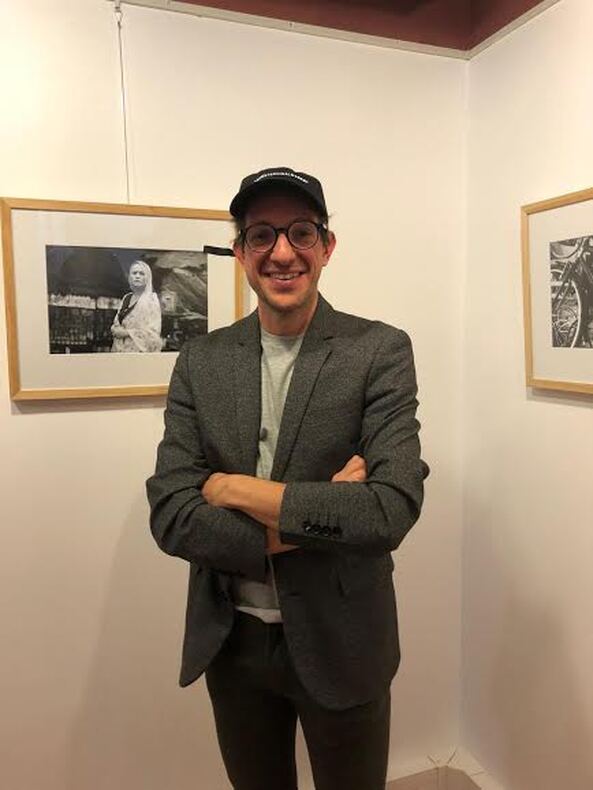
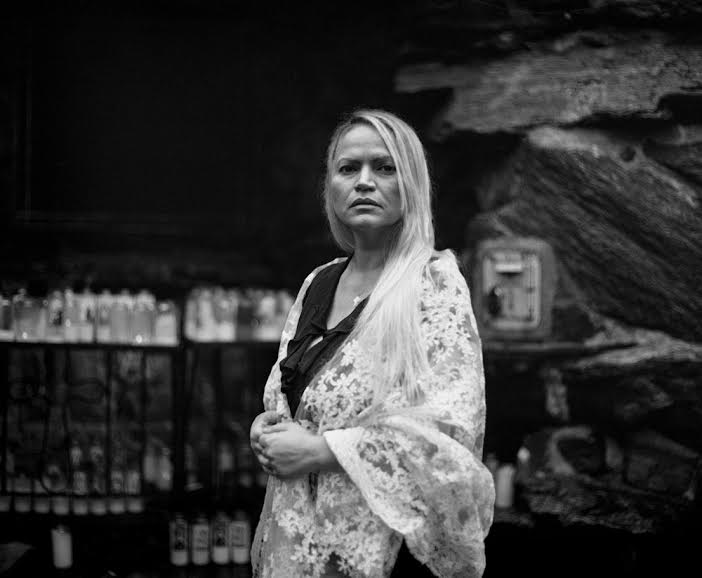
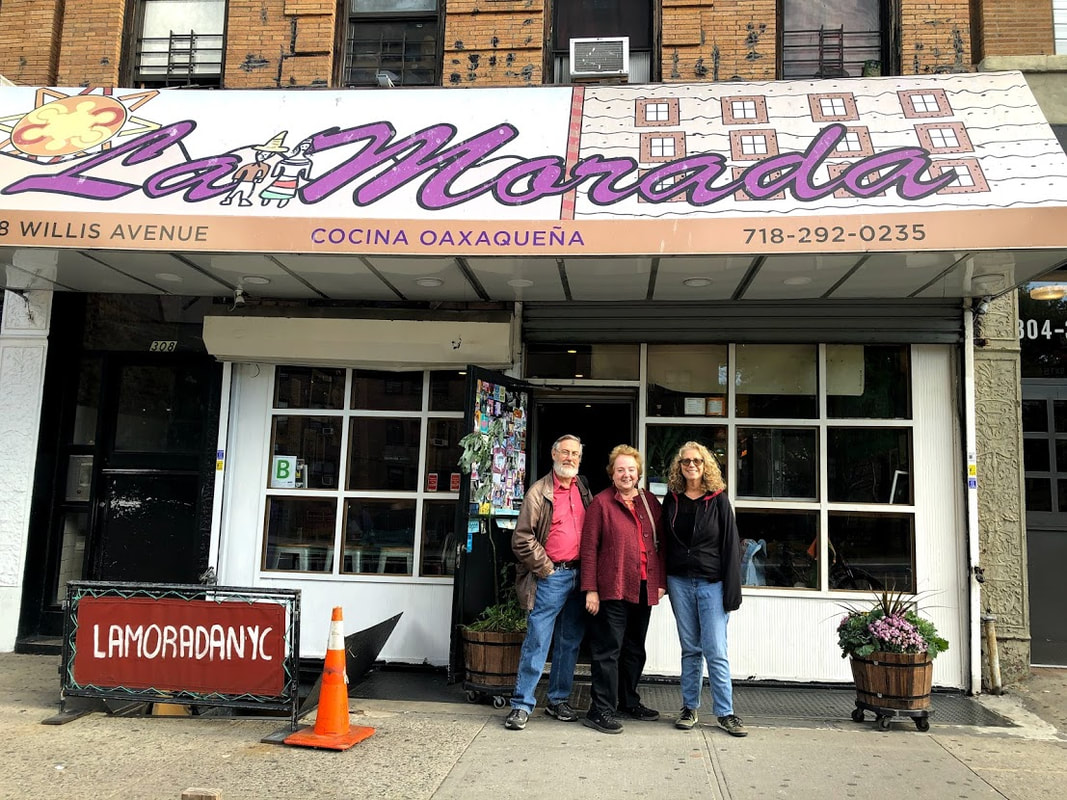
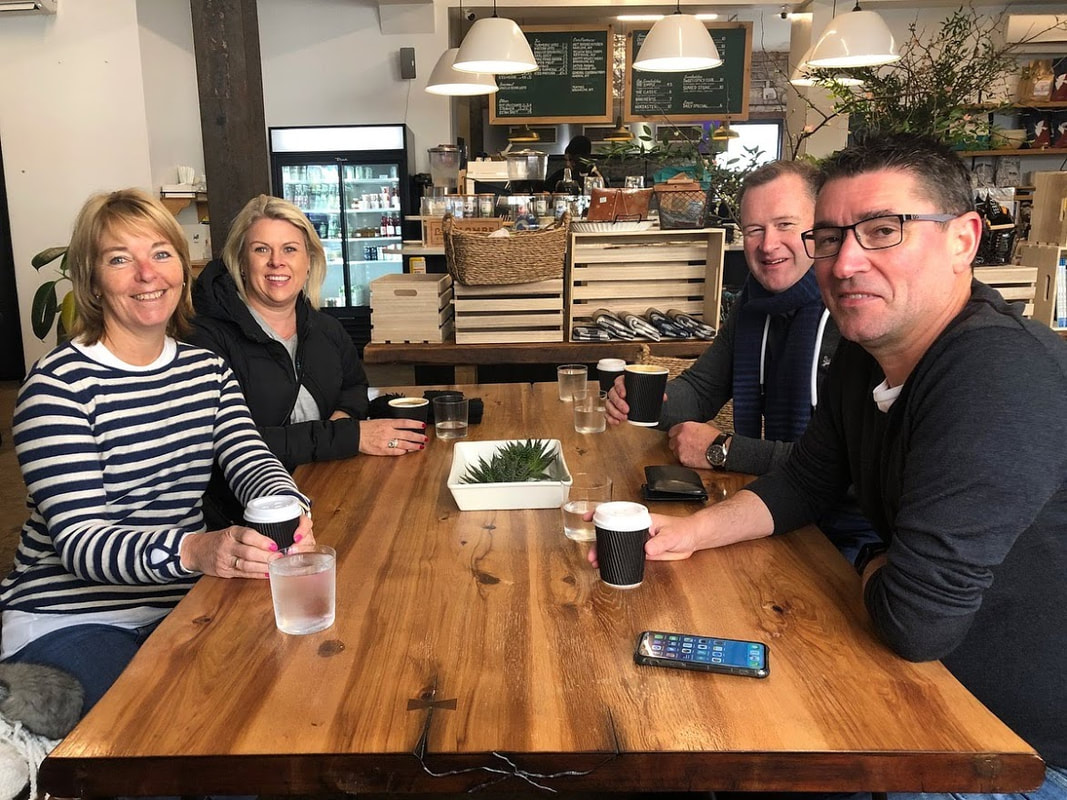
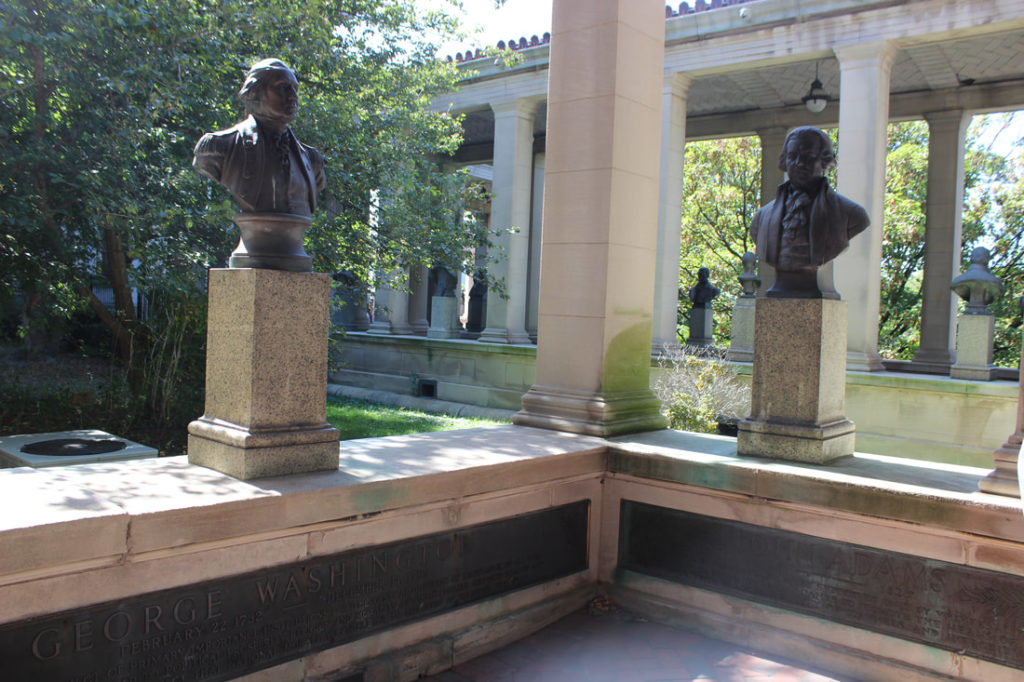

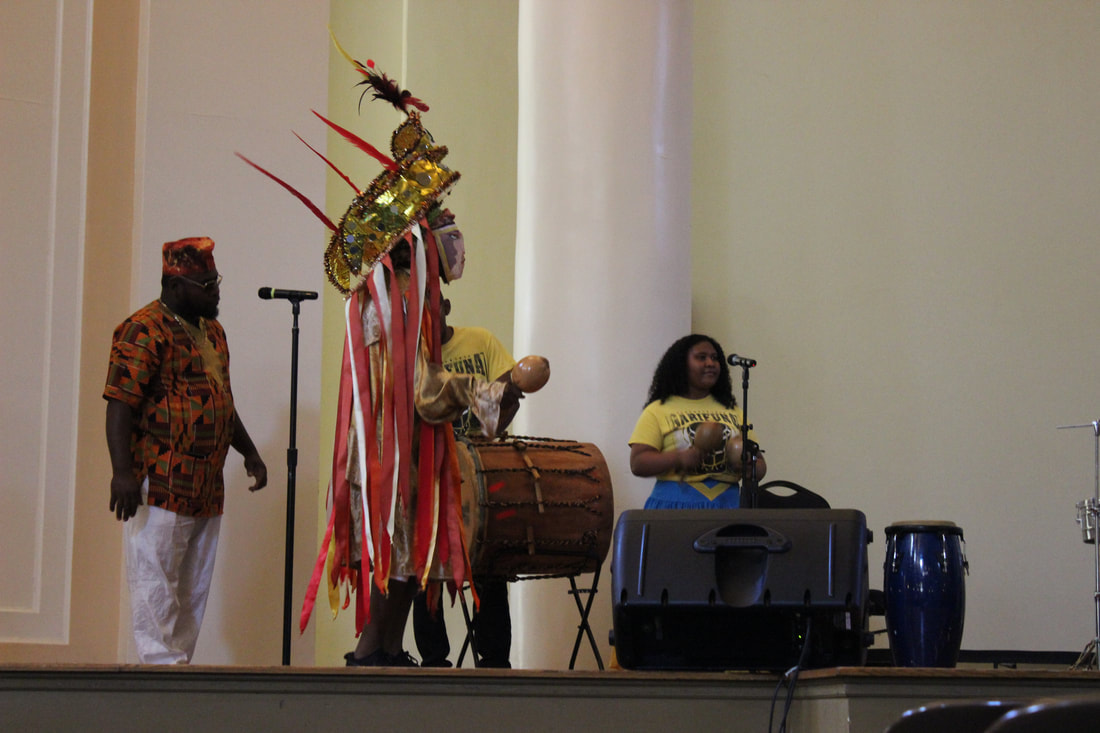
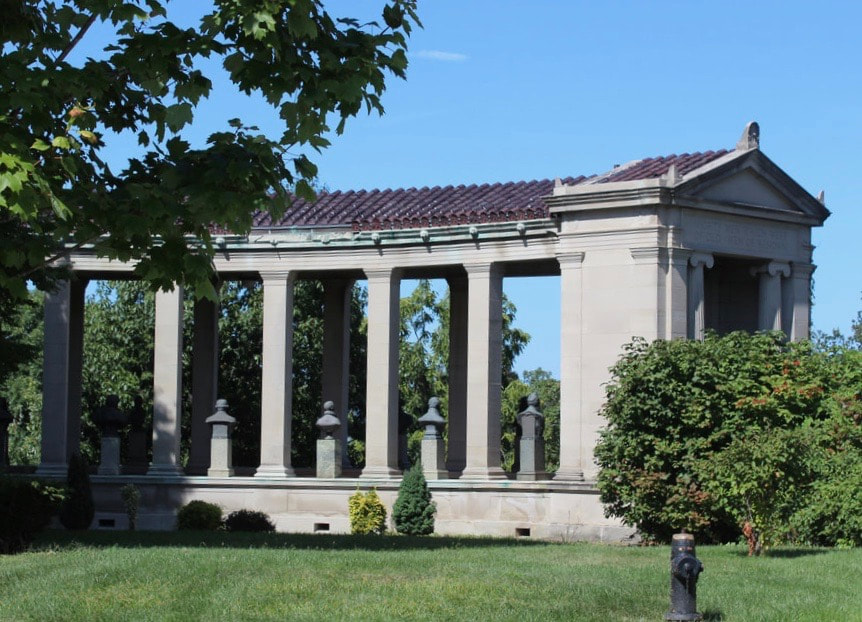
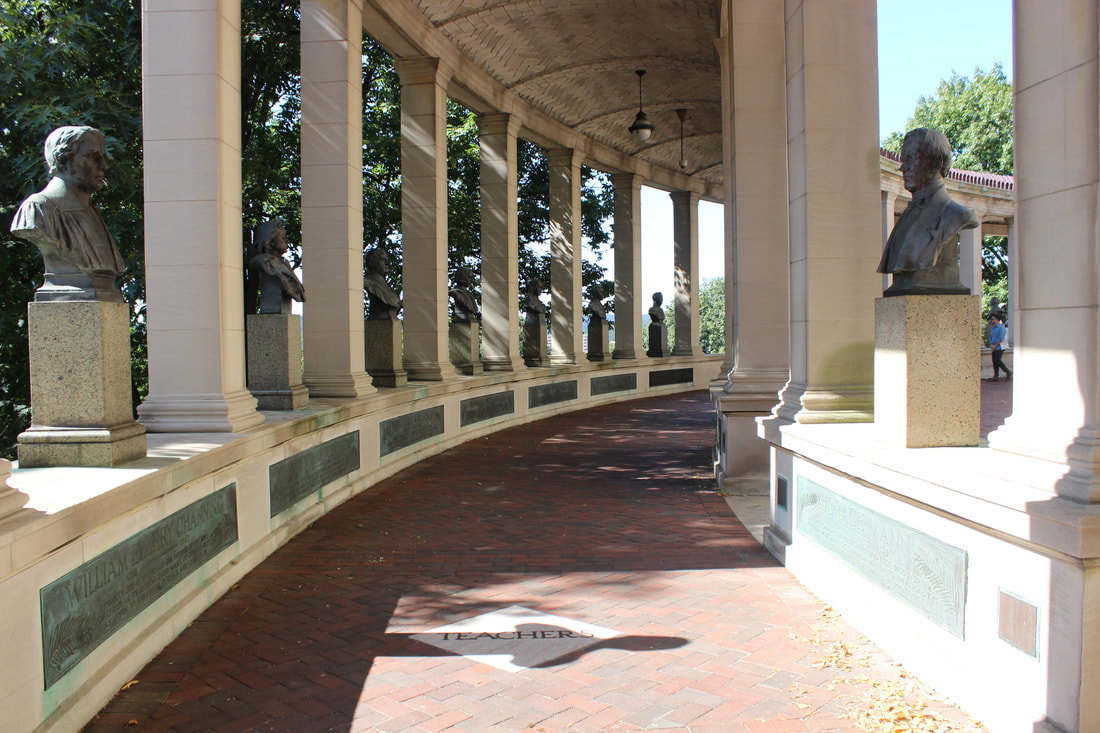
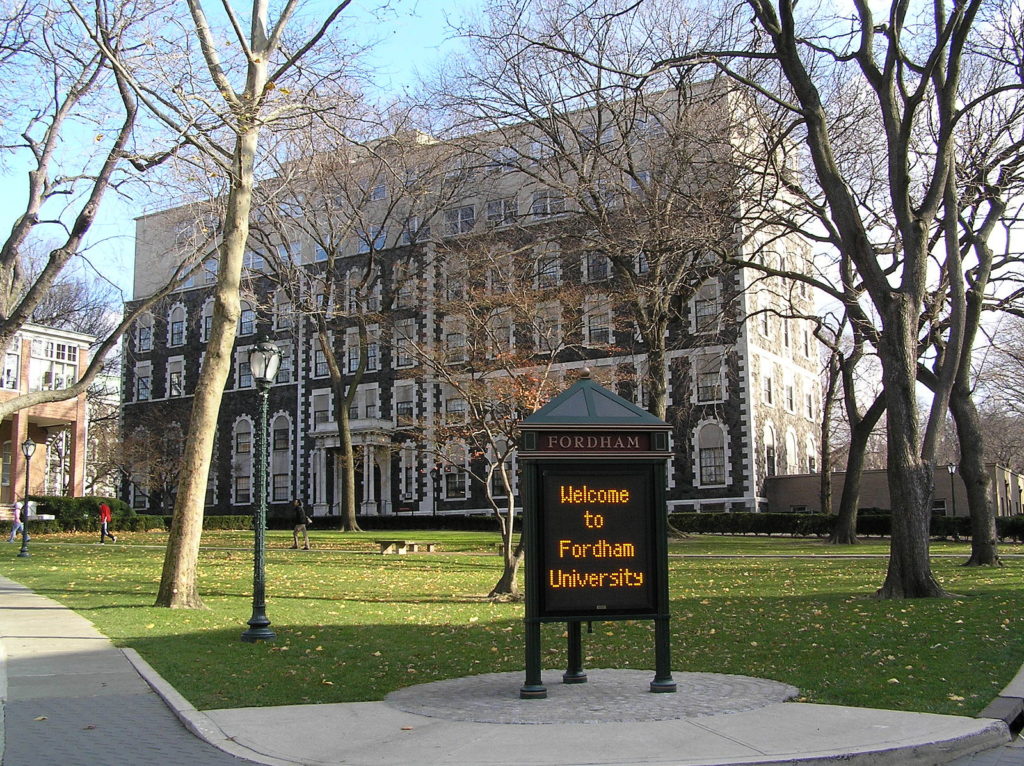
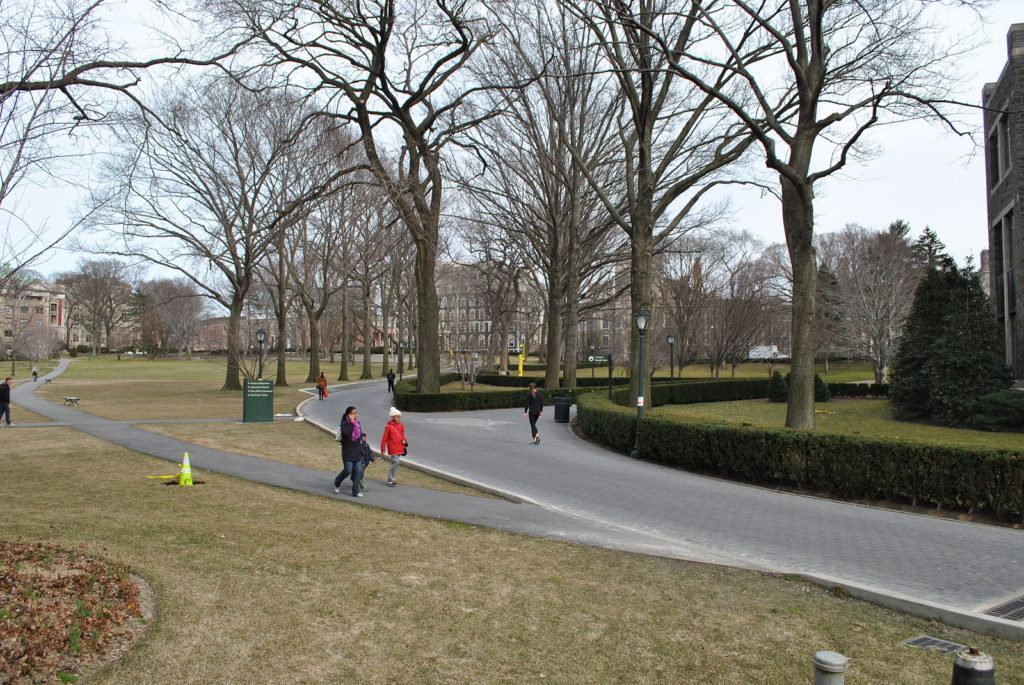
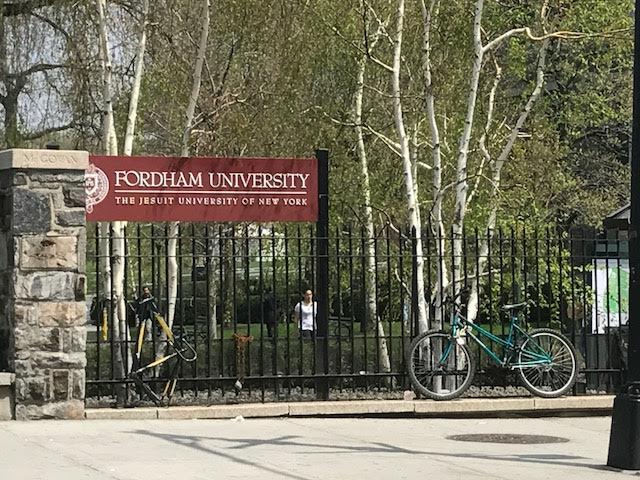

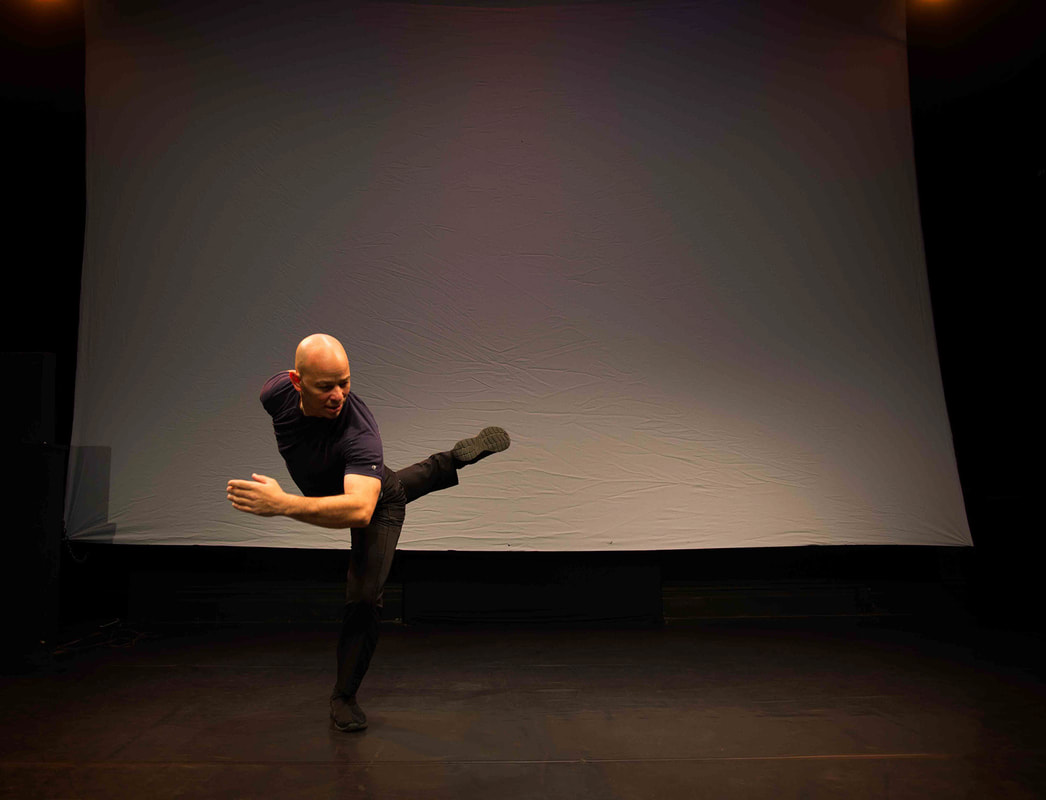
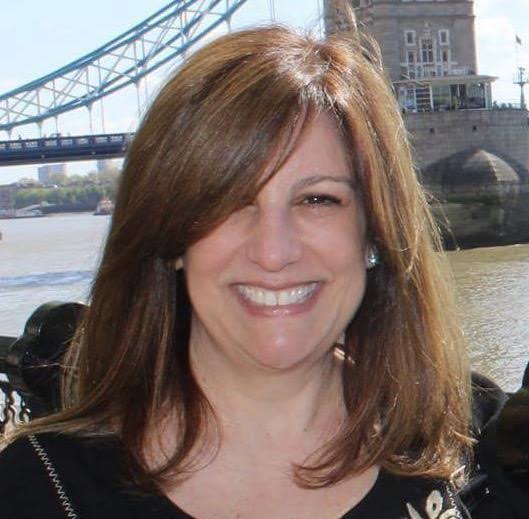
 RSS Feed
RSS Feed
